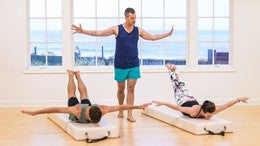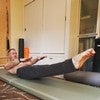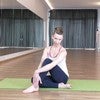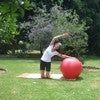Description
The Mat work is the gateway into Pilates for many people, but it is also the hardest part of the method to truly master. In this workshop, Benjamin Degenhardt breaks down all 34 exercises from the original sequence that was outlined in Return to Life. Because there are so many variations of these exercises, this is a great opportunity to understand the work deeper in your body so you will know how to make adjustments for yourself. In addition, he shows how each exercise is connected, and he offers placeholders that you can use if you come to a movement that is not right for your body.
Read about Meredith Rogers' experience as Benjamin's student in her blog Moving With An Open Mind.
Read about Meredith Rogers' experience as Benjamin's student in her blog Moving With An Open Mind.
What You'll Need: Mat
About This Video
Workshops: Free Workshops
Comments
Skip to Latest
Immensely helpful and gratifying detail. Thanks for making this content.
7 years ago
This was amazing! Thank you for such a clear explanation of these original exercises and how they flow together. You are an exceptional teacher! And thank you to PA for offering this great workshop.
It was mentioned that there would be additional information to download. I didn't see that option. Thank you again!!
It was mentioned that there would be additional information to download. I didn't see that option. Thank you again!!
7 years ago
I've done the first 50 minutes of this and I absolutely love it! I will love the first 50 minutes again and again, and know there is so much more to come. Thank you Benjamin! Thank you Meredith!
7 years ago
Hello Beth - when I say "download" in the introduction segment I am referring to my closing conversation with Meredith, not a digital download :) Thanks for checking, and thanks so much for watching!
7 years ago
1-10 of 110
You need to be a subscriber to post a comment.
Please Log In or Create an Account to start your free trial.



























































 Thank You very much
Thank You very much 



